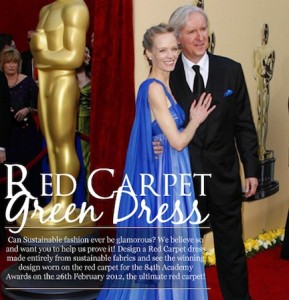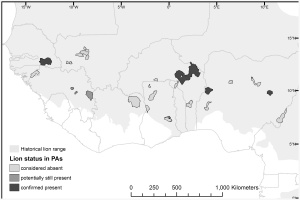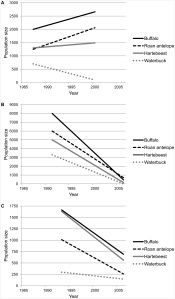Over the past years, the Oscars and sustainability have proven to be an award-winning combination. On Sunday, people globally will tune in to the 86th Academy Awards presentation to celebrate the best movies over the past year. It is important to salute the Academy of Motion Picture Arts and Sciences (The Academy) for its commitment to “green” living.
It does not come as a surprise that the organization would have sustainability as part of its agenda considering that so many of its members are outspoken supporters of the green movement, and they often lend their faces and financial support to environmental, health and social concerns. The popularity of many of these celebrities, including, but not limited to George Clooney, Angelina Jolie, Brad Pitt, Leonardo DiCaprio, Orlando Bloom and Selma Hayak, goes a long way to raise awareness of and garner support for environmental, health and social issues.
The commitment of the Academy to raise awareness of environmental issues and garner support through example also is noteworthy. This effort begins with the selection of the Dolby Theater, formerly the Kodak Theater, as the venue for the annual event. With this long-term agreement to be the home of the Oscars, Dolby is committed to environmental sustainability.
Global Green Oscar Week Kickoff
The Academy validated its commitment to sustainability with its annual kickoff by Global Green USA. This year the celebration was “dedicated to rebuilding communities subject to environmental degradation.” This organization now is the green event of Oscar week. It seeks to raise “conscience” about energy conservation, and this year included celebrities speaking about driving to the Oscar celebration in hybrid cars. This party featured a zero-waste plant-based dinner followed by a live auction that raised more than $20,000 to support its causes.
Red Carpet Green Dress
Second only to the actual awards ceremony, the highlight of Oscar night is the fashion displayed on the red carpet, and here some designers are featuring green dresses. Perhaps the most notable is Red Carpet Green Dress, who is marking its fifth anniversary for this event. This organization is the brainchild of Suzy Amis Cameron, wife of James Cameron, who, during press tours for Avatar (a Cameron film), sought to draw attention to the importance of sustainability in the fashion industry. Mrs. Cameron notes that “[w]hile there are still great strides to be made, it’s important to point out that there are a greater number of sustainable resources available to designers today than there were five years ago.”[1] This year’s Oscars Red Carpet will feature actress Olga Kurylenko wearing the design by this organization. Olga’s accessories also are selected with concern for ethical consumerism. Her limited edition vegan Red Carpet shoes are supplied as a result of a collaboration between PETA and Beyond Skin.
Meanwhile, on the men’s side, Kellan Lutz (Legend of Hercules) will be wearing the first sustainable tuxedo for Red Carpet Green Dress. This tuxedo was designed by Jomnarn Dul for H Brothers and was constructed from recycled materials.
Dining with a Conscience
This year’s Governor’s Ball, the official dinner held following the award ceremony, will be created and officiated by Wolfgang Puck (celebrating 20 years in this role). To the delight of the green movement, the theme will be the transcendent wonder of nature, with a display of lush vertical gardens under the stars that invite guests to mingle and celebrate nature. The menu includes a prominent focus on vegan dishes. All of the food will range from one-bite hors d’oeuvres to small-plate entrees. Once again, these choices are indicative of the Academy’s concern and focus on the need to raise awareness of the environment and sustainability.[2]
The Academy Awards is one of the most popular events globally and is viewed by many people, thereby creating an excellent opportunity to raise awareness about green initiatives and sustainability. We are proud to present background information on the efforts of the Academy to make a difference in the movement for sustainability.
__________________
Resources for this article:
1. http://redcarpetgreendress.com/home/olga-kurylenko-to-reveal-the-fifth-design-from-suzy-amis-camerons-red-carpet-green-dress-on-the-oscar-carpet.
2. http://fbworld.com/2014/02/24/starring-role-for-master-chef-wolfgang-puck-at-86th-academy-awards-governors-ball.



























